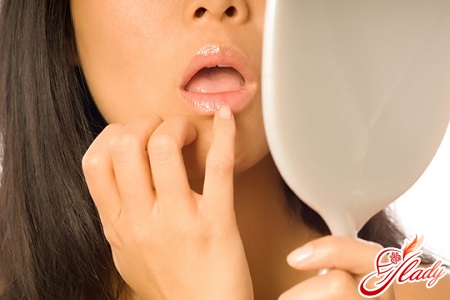 Is there blood stains on your toothbrush again?Approximately 75% of all adults and 40% of children are familiar with such a phenomenon as inflammation and bleeding of the gums, as well as their irritability and swelling. In almost all cases, the cause of such phenomena is a disease such as gingivitis. The special insidiousness of this disease is that it does not manifest itself in the early stages. And only when the disease is already in an advanced stage, symptoms such as:
Is there blood stains on your toothbrush again?Approximately 75% of all adults and 40% of children are familiar with such a phenomenon as inflammation and bleeding of the gums, as well as their irritability and swelling. In almost all cases, the cause of such phenomena is a disease such as gingivitis. The special insidiousness of this disease is that it does not manifest itself in the early stages. And only when the disease is already in an advanced stage, symptoms such as:
- The gums become swollen, very sensitive to the slightest irritants.
- With some impact on the gums, they begin to bleed - the blood can be seen not on the toothbrush, but even on a piece of soft bread.
- The color of the gums changes too - they can get from pink to bright red.
The first sign of gingivitis is a peculiarplaque on the gums - a film formed by bacteria from sugars. During brushing, this film is destroyed and destroyed, but very quickly forms again. In the same case, if for some reason the teeth are not brushed often enough, or not at all, the film hardens and turns into tartar, which can no longer be removed with a simple toothbrush. Professional cleaning is required to remove it. Then the gums start bleeding. Tartar is not only a cosmetic defect - they serve as a kind of storage for bacteria. In addition, tartar itself is very irritating to the gums, leading to swelling and bleeding. And the longer tartar remains on the gums, the more the gums suffer. Therefore, if you have bleeding gums, treatment should be started as soon as possible. In fairness, it should be noted that there are also other causes of gingivitis, which, although less common, still occur. These reasons include:
- Pharmacological preparations
Many medications, for example,antiviral or antidepressants include substances that reduce salivation. But it is saliva that cleanses gums from bacteria. In the same case, if saliva is produced in small quantities, tartar forms much faster and in greater quantities.
- Fungal and viral infections
Despite the fact that in most casesthe cause of gingivitis is pathogenic bacteria, in some cases fungi and viruses can lead to the development of the disease. For example, herpetic gingivostomatitis occurs if the mucous membranes of the oral cavity are affected by the herpes virus. With this form of the disease, the entire oral cavity, and especially the gums, are covered with small ulcers. If the lesion occurs as a result of the action of fungi, a white coating appears on the mucous membranes of the oral cavity - on the tongue, cheeks and gums - and bleeding gums.
Treatment of gingivitis
It is absolutely unacceptable to ignoregingivitis, leaving it untreated. If the disease is not treated, it will smoothly flow into periodontitis. And periodontitis is a much more serious problem, as it leads to tooth loss. It also has an extremely negative impact on general health - it increases the risk of strokes and heart attacks, and in pregnant women it can provoke the onset of premature labor. Gingivitis is treated by a dentist. The key to successful treatment is careful oral hygiene - your doctor will tell you about this. He will select an individual treatment plan for you. As a rule, it is impossible to do without medications: anti-inflammatory and antibacterial drugs, as well as immunomodulators are used. However, it is almost never possible to get by with drug treatment alone - as a rule, it is necessary to remove tartar, which is done either by mechanical action or with the help of ultrasound. Those fillings that hang over the gums are replaced.
Other causes of bleeding gums
Besides gingivitis, bleeding gums causesmay have others. There are also a number of diseases that cause gums to become inflamed and start bleeding. For example, diseases such as lupus and lichen erythematosus, if they are in an advanced stage, can lead to a severe inflammatory process of the gums. As a result, the mucous membrane of the gums can simply peel off from other underlying tissues. And in people suffering from leukemia, the gums are overflowing with leukemic cells, which also leads to increased bleeding of the gums.
- Changes in the hormonal background
In the event that hormonal levels change,a person may also experience increased bleeding gums. A striking example is pregnant women - their hormonal background changes significantly and, as a result, the gums become very sensitive, bleeding gums appear. Coupled with morning sickness, all this causes a lot of unpleasant sensations for the expectant mother.
- Poor nutrition
In the event that a person's dietcontains insufficient amounts of vitamins, especially group B, as well as minerals, in particular calcium and phosphorus, bleeding gums are also inevitable. In such cases, it is necessary to review your diet and start taking multivitamin complexes.
Prevention of inflammation and bleeding gums
Any disease is much easier to prevent,than to treat later. This also applies to bleeding gums. The best way to avoid this problem is to carefully observe oral hygiene. Be sure to brush your teeth at least twice a day, not forgetting the farthest corners of the mouth and the tongue. Try to reconsider your diet a little - reduce the consumption of food that contains a lot of sugar. Try to snack as little as possible, since plaque forms on the teeth very quickly. Or use dental chewing gum after each meal. Also, do not forget about preventive examinations with a doctor.









